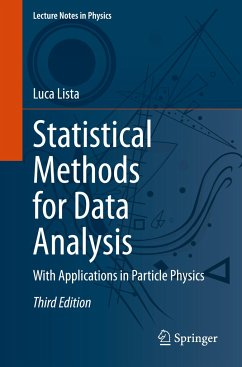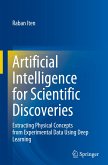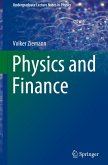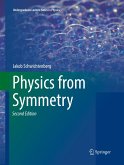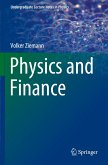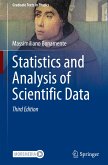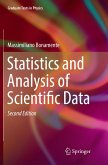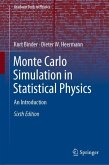This third edition expands on the original material. Large portions of the text have been reviewed and clarified. More emphasis is devoted to machine learning including more modern concepts and examples. This book provides the reader with the main concepts and tools needed to perform statistical analyses of experimental data, in particular in the field of high-energy physics (HEP).
It starts with an introduction to probability theory and basic statistics, mainly intended as a refresher from readers' advanced undergraduate studies, but also to help them clearly distinguish between the Frequentist and Bayesian approaches and interpretations in subsequent applications. Following, the author discusses Monte Carlo methods with emphasis on techniques like Markov Chain Monte Carlo, and the combination of measurements, introducing the best linear unbiased estimator. More advanced concepts and applications are gradually presented, including unfolding and regularization procedures, culminating in the chapter devoted to discoveries and upper limits.
The reader learns through many applications in HEP where the hypothesis testing plays a major role and calculations of look-elsewhere effect are also presented. Many worked-out examples help newcomers to the field and graduate students alike understand the pitfalls involved in applying theoretical concepts to actual data.
It starts with an introduction to probability theory and basic statistics, mainly intended as a refresher from readers' advanced undergraduate studies, but also to help them clearly distinguish between the Frequentist and Bayesian approaches and interpretations in subsequent applications. Following, the author discusses Monte Carlo methods with emphasis on techniques like Markov Chain Monte Carlo, and the combination of measurements, introducing the best linear unbiased estimator. More advanced concepts and applications are gradually presented, including unfolding and regularization procedures, culminating in the chapter devoted to discoveries and upper limits.
The reader learns through many applications in HEP where the hypothesis testing plays a major role and calculations of look-elsewhere effect are also presented. Many worked-out examples help newcomers to the field and graduate students alike understand the pitfalls involved in applying theoretical concepts to actual data.
"The most unique selling point of this text is that it is highly illustrative, including many colourful and insightful figures which aides in the dissemination of the material presented. ... this textbook is written with particle physics applications in mind, the text is still easily accessible to readers with backgrounds across the physical sciences. ... this text offers an insightful viewpoint of how analyses are carried at experiments in the modern age." (physicsbookreviewer.blogspot.com, January 29, 2024)
The book is important because, as AI and data science continue to shape the future, much interdisciplinary work is being done in many different domains. It is a very good example of interdisciplinary physics research using AI and data science. ... Graduate students are often expected to apply theoretical knowledge. This book will be an invaluable resource for them, to jumpstart their research by getting equipped with the right statistical and data analysis toolsets. (Gulustan Dogan, Computing Reviews, August 8, 2023)
The book is important because, as AI and data science continue to shape the future, much interdisciplinary work is being done in many different domains. It is a very good example of interdisciplinary physics research using AI and data science. ... Graduate students are often expected to apply theoretical knowledge. This book will be an invaluable resource for them, to jumpstart their research by getting equipped with the right statistical and data analysis toolsets. (Gulustan Dogan, Computing Reviews, August 8, 2023)

